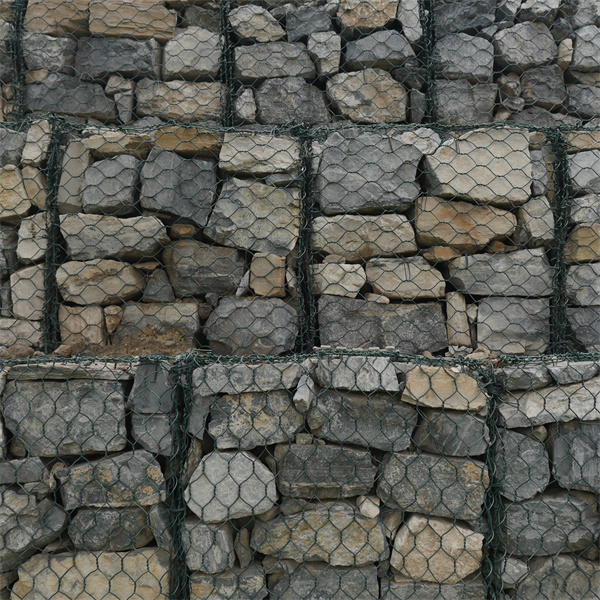Nov . 30, 2024 02:20 Back to list
Gabion Retaining Wall Specifications and Construction Guidelines for Efficient Landscape Design
Gabion Retaining Wall Detail An Overview
A gabion retaining wall is a structure designed to hold back soil and prevent erosion while providing a visually appealing landscape enhancement. As a popular choice among engineers and designers, gabion walls are constructed from wire mesh filled with rocks, stones, or other materials. This article explores the details of gabion retaining walls, their construction process, benefits, and applications.
Understanding Gabion Walls
Gabions are wire mesh boxes, often rectangular or cylindrical, that are filled with stone or other appropriate materials. The term gabion is derived from the Italian word gabbione, which means big cage. These structures are typically assembled on-site or pre-fabricated in a factory, ensuring high-quality construction and uniformity.
The design of the wall can vary based on factors such as location, intended use, and aesthetic preference. Gabion walls can be tiered, sloped, or straight, depending on the landscape and the engineering requirements of the project.
Construction Process
1. Site Preparation The construction process begins with thorough site preparation, including clearing the area of vegetation and debris. The soil is excavated to ensure a solid foundation for the wall.
2. Foundation A stable foundation is critical for the wall's integrity. In many cases, a concrete base is poured, though compacted soil can suffice for smaller structures. This step ensures the wall maintains its position over time, resisting shifting or settling.
3. Assembling Gabion Baskets Gabion baskets are assembled using heavy-duty wire mesh, usually galvanized or coated to prevent corrosion. The wire is woven or welded into shape, forming a robust cage capable of holding substantial weight.
4. Filling Gabions Once the cages are in place, they are filled with selected stone, gravel, or other materials that complement the surrounding environment. The choice of fill material not only impacts the stability and weight of the wall but also its appearance. Using larger stones at the bottom and smaller stones at the top creates a more aesthetically pleasing gradient.
5. Stacking Baskets The filled gabion baskets are then stacked to create the desired height of the retaining wall. Each layer is carefully positioned, ensuring tightness and stability between the baskets.
gabion retaining wall detail factory

6. Securing the Structure The final step involves securing the structure with additional mesh or connectors at the back to prevent shifting. Depending on the height of the wall, drainage features may also be included to alleviate hydrostatic pressure, which can compromise the wall's stability.
Benefits of Gabion Retaining Walls
Gabion retaining walls offer numerous advantages
- Erosion Control They effectively prevent soil erosion by absorbing and dissipating water flow, making them ideal for slopes and riverbanks. - Aesthetic Versatility With various fill materials available, gabion walls can be designed to suit any landscape. Natural stones blend seamlessly into the environment, while colored stones can create striking contrasts. - Cost-Effective The materials used in gabion walls are often readily available, making them an economical choice compared to traditional concrete walls.
- Environmental Friendliness Gabion walls promote vegetation growth and provide a habitat for small wildlife. The gaps between the stones can allow plants to take root, further enhancing biodiversity.
- Durability Constructed with robust materials, gabion walls withstand harsh weather conditions and can last for many years with minimal maintenance.
Applications
Gabion retaining walls are extensively used in various construction projects, including
- Landscaping For terracing gardens or as part of landscape beautification projects. - Infrastructure Along highways to stabilize slopes and prevent landslides. - Flood Management To mitigate damage from flooding by controlling water flow.
In conclusion, gabion retaining walls are not only effective in engineering and environmental terms but also provide an attractive landscaping solution. By understanding their construction details and benefits, builders and homeowners alike can utilize gabion walls to enhance both function and aesthetics in their projects. Whether used for practical purposes or decorative designs, gabion walls represent a blend of durability, effectiveness, and beauty in modern construction.
-
Why PVC Coated Gabion Mattress Is the Best Solution for Long-Term Erosion Control
NewsMay.23,2025
-
Gabion Wire Mesh: The Reinforced Solution for Modern Construction and Landscape Design
NewsMay.23,2025
-
Gabion Wall: The Flexible, Seismic-Resistant Solution for Modern Landscaping and Construction
NewsMay.23,2025
-
Gabion Wall Solutions: The Durable, Decorative, and Affordable Choice for Every Landscape
NewsMay.23,2025
-
Gabion Basket: The Durable and Flexible Alternative to Traditional Retaining Walls
NewsMay.23,2025
-
Gabion Basket: The Proven Solution for Slope Stability and Flood Control
NewsMay.23,2025
-
Versatility of Chain Link Fence Gabion
NewsMay.13,2025






